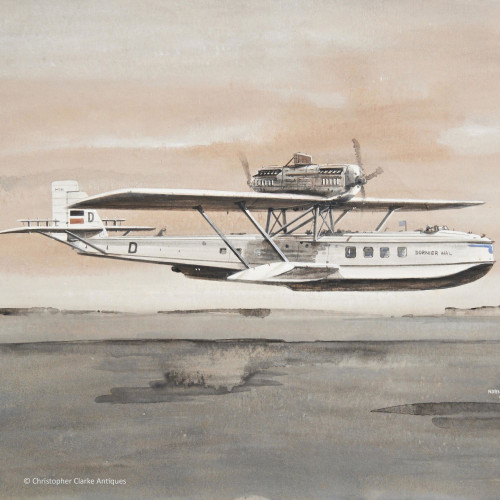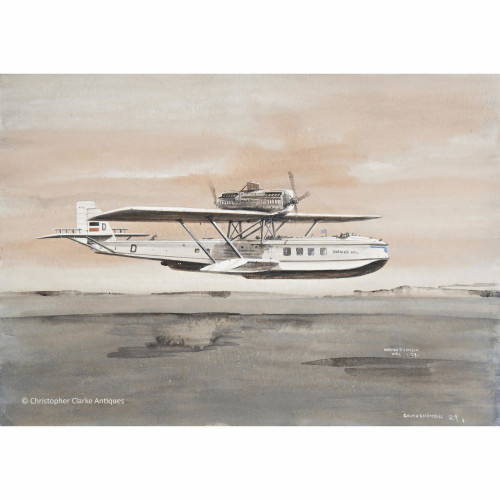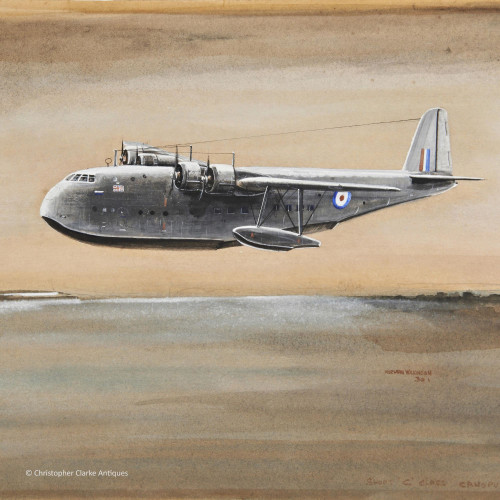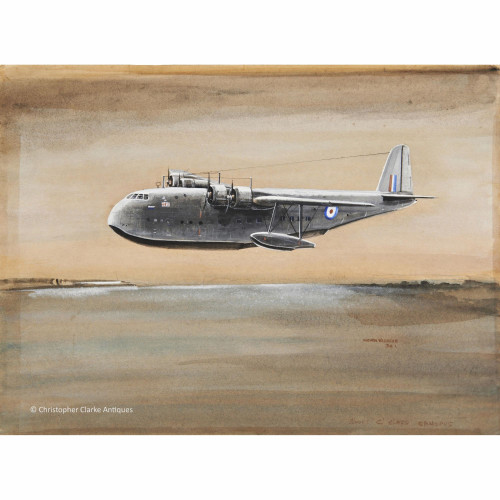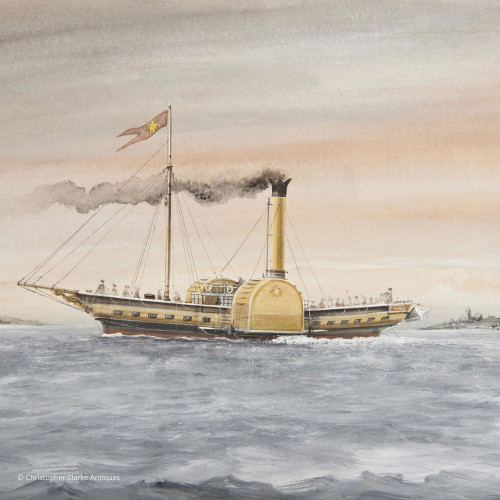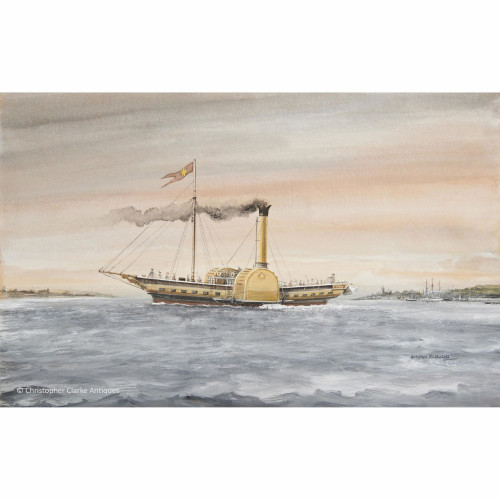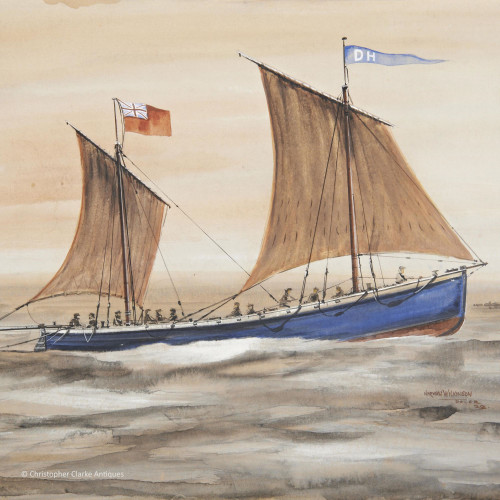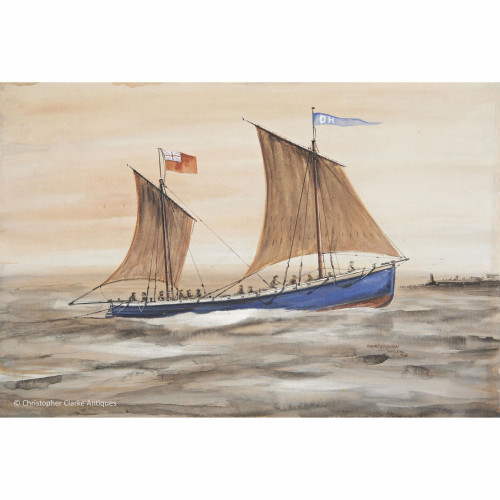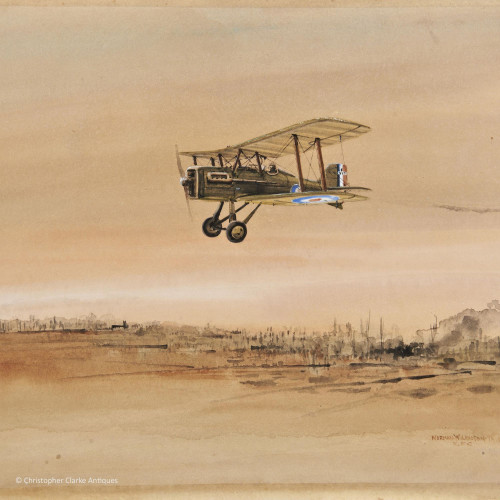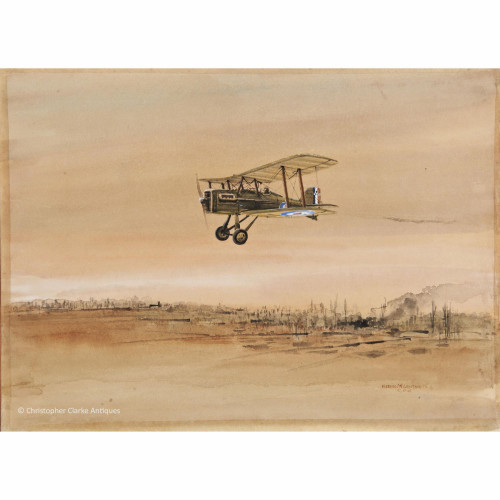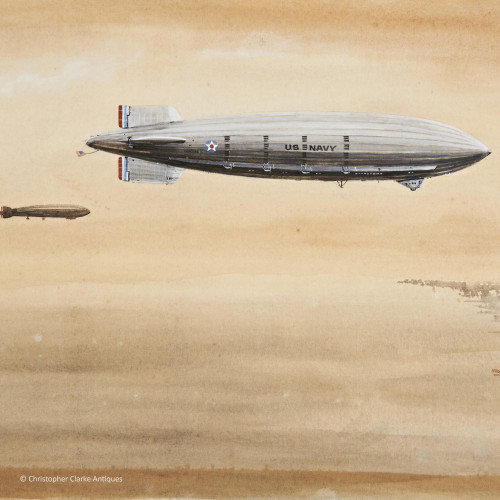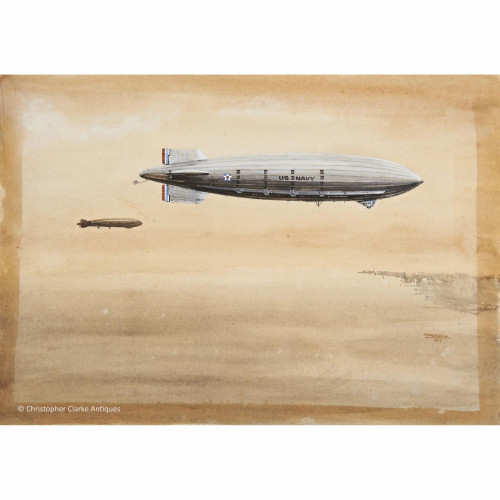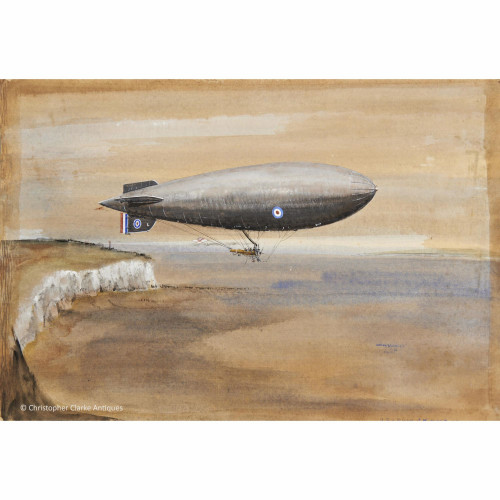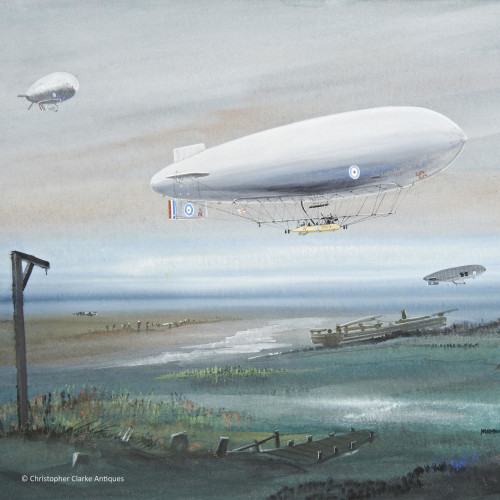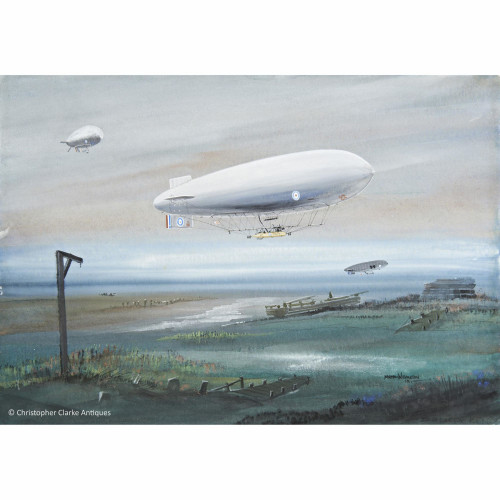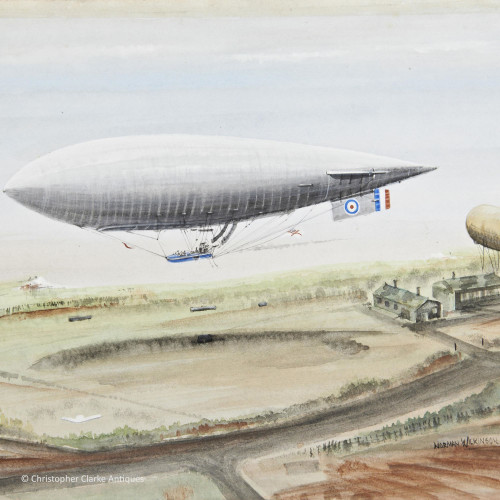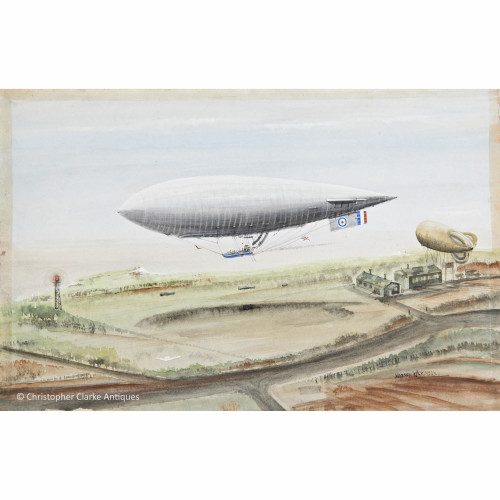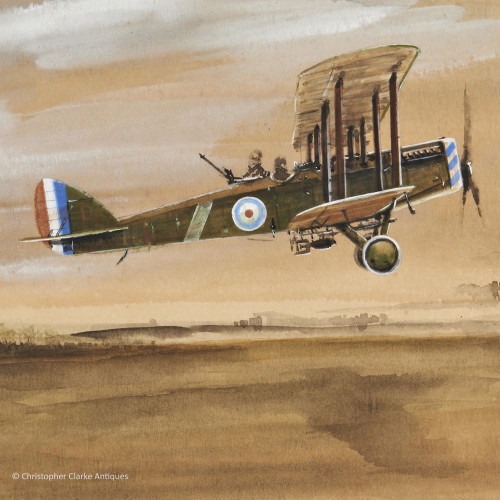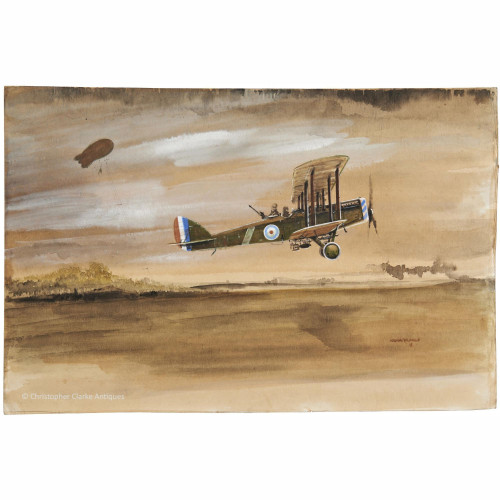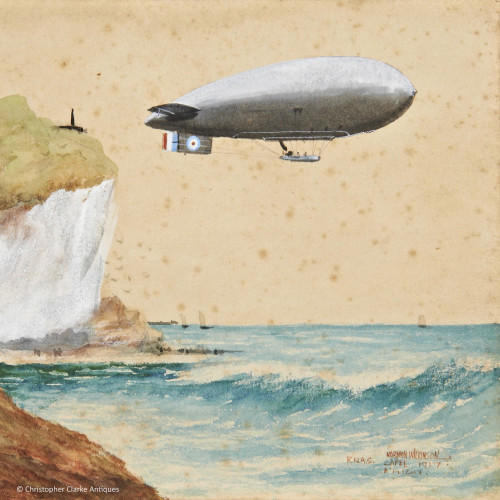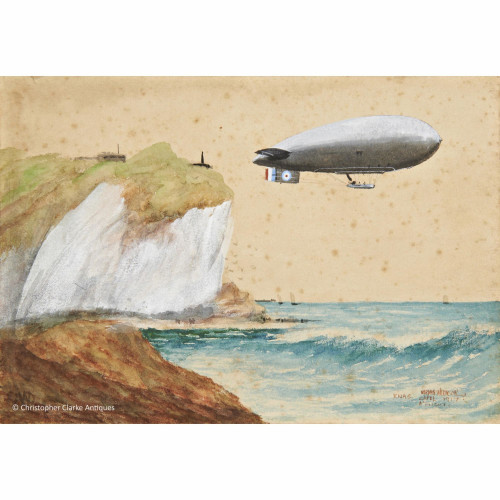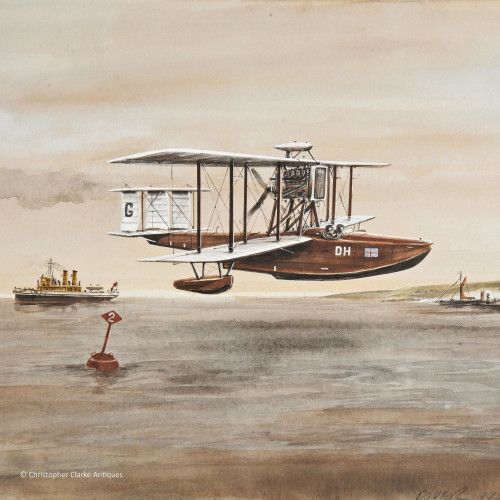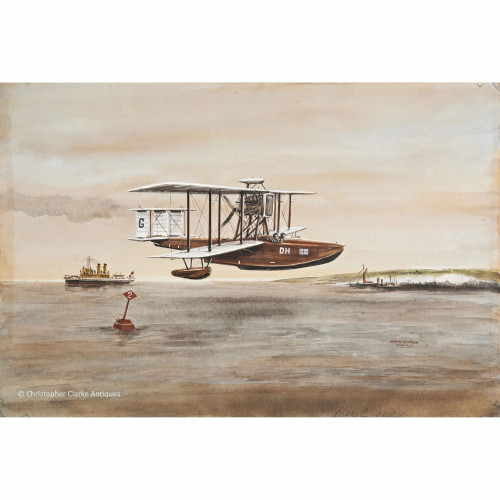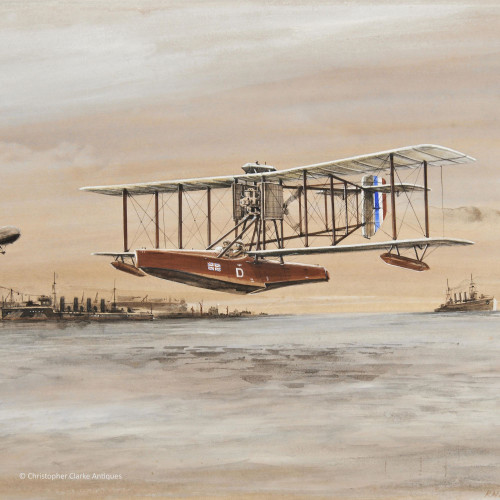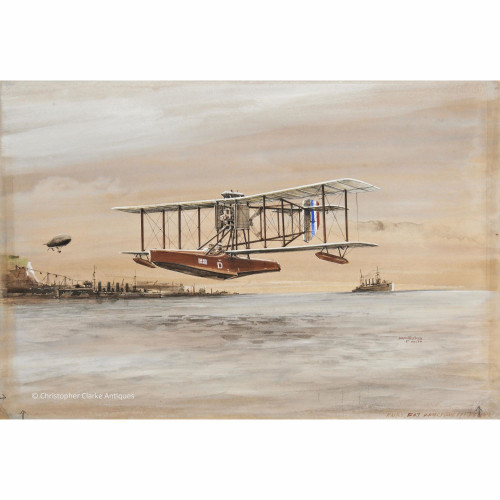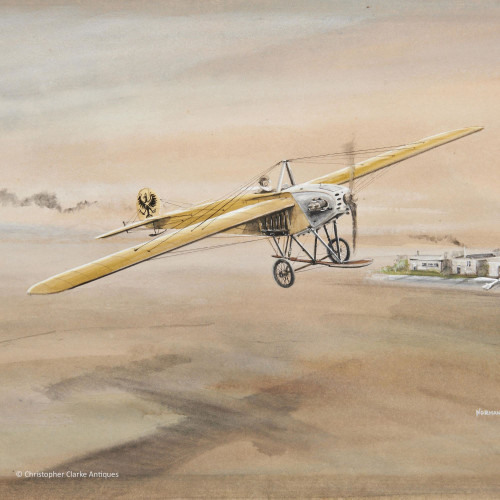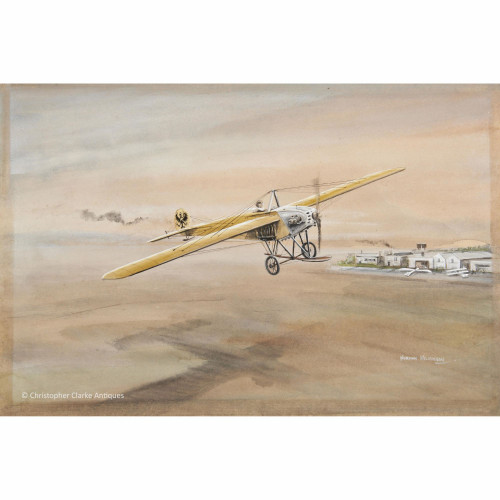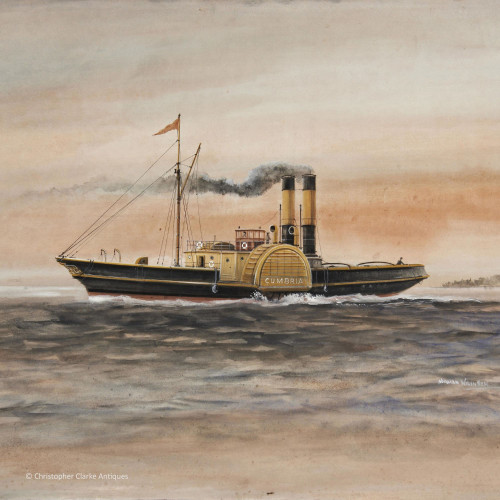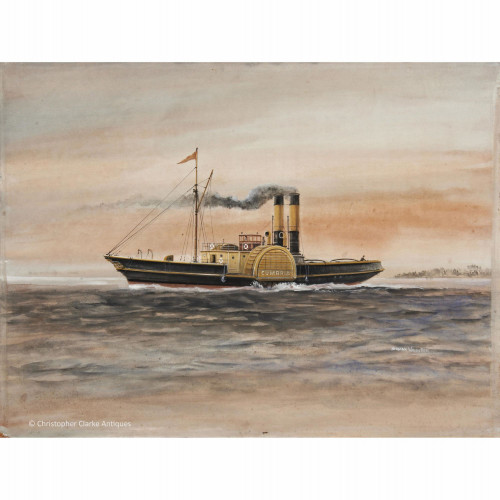Norman Wilkinson
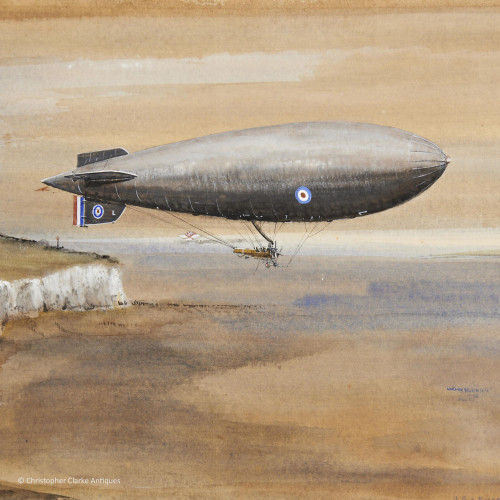
1878 - 1971
Norman Wilkinson was one of the finest illustrators of the first half of the 20th century. He was born on the 24th of November 1878 in Cambridge, the son of Thomas, a Professor of Music and Emma. He was educated at Berkhamsted School, Hertfordshire and St. Paul's Cathedral Choir School in London, going on to Southsea School of Art. It was on the south coast, and training under the maritime artist Louis Grier, that he developed a love of painting ships and the sea which was to remain with him all his life. His artistic education continued in Paris studying figure painting.
By the age of 20 he was producing work for The Illustrated News as well as other publications and was establishing a reputation as an accomplished artist. In 1906 he was elected a member of Royal Institute of Painters in Watercolours later becoming the Institute's president in 1936. He also went on to become a member of the Royal Society of British Artists, the Royal Society of Marine Artists, the Royal Institute of Oil Painters and the Royal Scottish Society of Painters in Watercolour. In 1919 he was also elected Honourable Marine Painter to the Royal Yacht Squadron.
In the early 1900s he was the illustrator for a number of books, mostly centred on the navy and ships. In 1907 he did all 51 full page colour illustrations for The Royal Navy and the following year he illustrated Famous Duels of the Fleet by HB Money Coutts. In 1918
Norman Wilkinson was one of the finest illustrators of the first half of the 20th century. He was born on the 24th of November 1878 in Cambridge, the son of Thomas, a Professor of Music and Emma. He was educated at Berkhamsted School, Hertfordshire and St. Paul's Cathedral Choir School in London, going on to Southsea School of Art. It was on the south coast, and training under the maritime artist Louis Grier, that he developed a love of painting ships and the sea which was to remain with him all his life. His artistic education continued in Paris studying figure painting.
By the age of 20 he was producing work for The Illustrated News as well as other publications and was establishing a reputation as an accomplished artist. In 1906 he was elected a member of Royal Institute of Painters in Watercolours later becoming the Institute's president in 1936. He also went on to become a member of the Royal Society of British Artists, the Royal Society of Marine Artists, the Royal Institute of Oil Painters and the Royal Scottish Society of Painters in Watercolour. In 1919 he was also elected Honourable Marine Painter to the Royal Yacht Squadron.
In the early 1900s he was the illustrator for a number of books, mostly centred on the navy and ships. In 1907 he did all 51 full page colour illustrations for The Royal Navy and the following year he illustrated Famous Duels of the Fleet by HB Money Coutts. In 1918
he provided the illustrations for the book Submarine and Anti-Submarine. However, his work wasn't all centred on maritime art and in 1911 he illustrated The Romaunt of The Rose, a 14th Century translation attributed to Chaucer. He also designed a number of travel posters throughout his career for railway companies such as the London and North Western Railway, the Southern Railway and the London Midland and Scottish Railway. He is also known for his drypoint etchings of fishing scenes.
With the outbreak of World War 1, it was a natural step for Wilkinson to join the Royal Navy Fleet Reserve in 1915. He was already a well established artist and took the opportunity of his service with the submarine patrols in the Dardanelles to produce a number of watercolours which were later published. He became a Temporary Lieutenant in September 1916 and a full Lieutenant in January 1918, eventually becoming a Lieutenant Commander. He was then assigned to the naval base at Devonport and was credited with the invention of dazzle camouflage for ships. The purpose was not the impossible task of hiding ships but to disguise their speed and direction, making it harder for the enemy to accurately torpedo them. Such was the success that he was put in charge of a special camouflage unit in the basement of the Royal Academy of Arts. He produced numerous works of art during the war but was never an official war artist. However, he was awarded an OBE in 1918 and his dazzle camouflage probably played a large part in the award. Such was the recognition of Wilkinson's work that he was asked to design the first Chelsea Arts Club Ball after the war which took the title of the Dazzle Ball with the Royal Albert Hall decorations designed by Wilkinson and 3 of his colleagues. The Sketch described the ball as 'Dazzle, Dazzle, Joy and Jazzle'.
Wilkinson continued to be a sought after artist and illustrator after the war and was called upon again, in WW2 by the British Air Ministry to help with the concealment of Airfields. He also produced a large body of work based on the Royal and Merchant Navies, and the Coastal Command which resulted in an exhibition at the National Gallery in 1944. Added to this, he produced 9 paintings of the D Day landings, which he witnessed from HMS Jervis. His work is held by a number of institutions, both at home and abroad, including the Greenwich Maritime Museum and the Imperial War Museum and he exhibited widely during his career. He published his autobiography A Brush with Life in 1969, 2 years before he died in 1971.
His work is much sought after today, be it original paintings, posters or prints.
15 ITEMS

